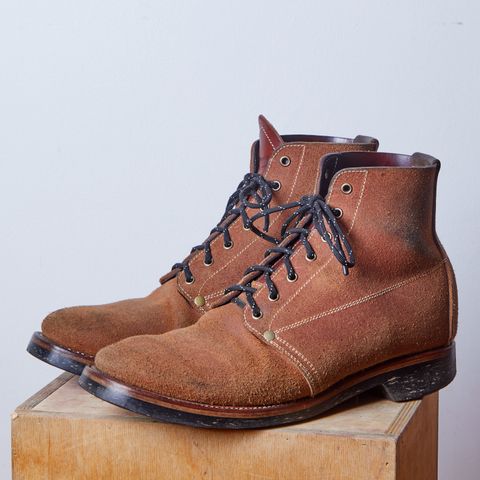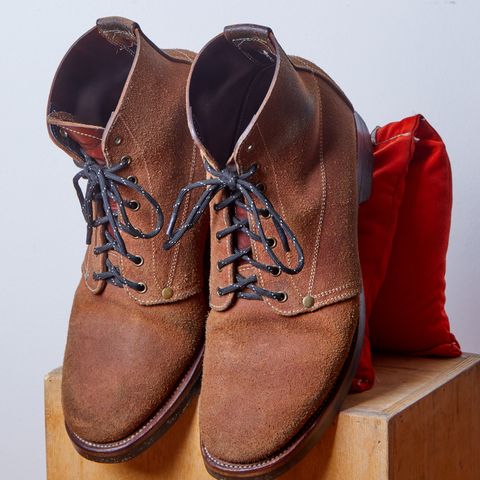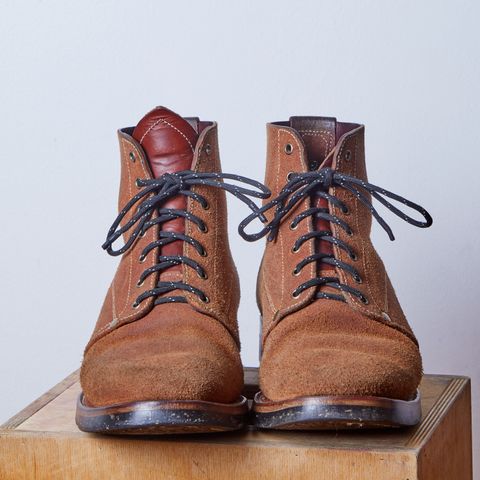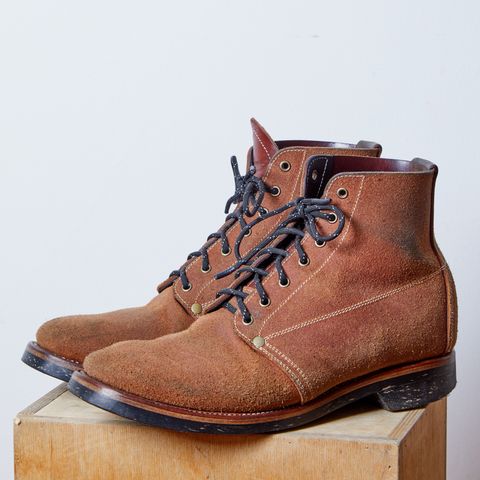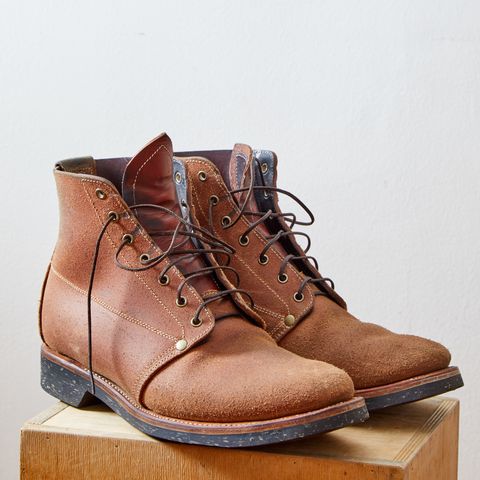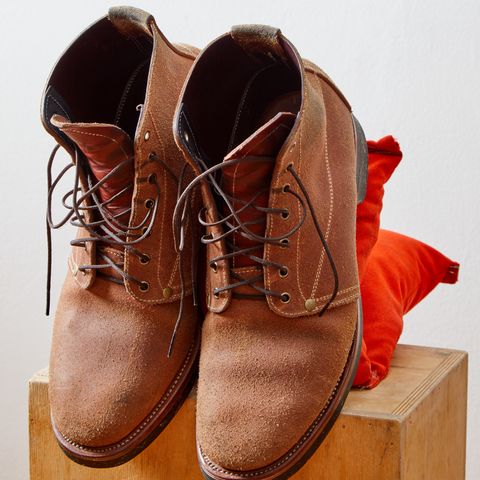About
Wickett & Craig Oiled Latigo Roughout is a leather configuration that combines Wickett & Craig's proprietary Oiled Latigo leather with roughout construction, where the flesh side of the hide serves as the exterior surface. This leather is hot-dipped in oils, waxes, and tallows before being oriented with the fuzzy underside facing outward. The configuration is used primarily in heritage footwear and leather goods, offering weather resistance combined with the durability characteristics of full-grain leather construction.
About
Wickett & Craig Oiled Latigo Roughout is a leather configuration that combines Wickett & Craig's proprietary Oiled Latigo leather with roughout construction, where the flesh side of the hide serves as the exterior surface. This leather is hot-dipped in oils, waxes, and tallows before being oriented with the fuzzy underside facing outward. The configuration is used primarily in heritage footwear and leather goods, offering weather resistance combined with the durability characteristics of full-grain leather construction.
The leather retains the structural integrity of Wickett & Craig's vegetable-tanned Oiled Latigo while displaying the rough, napped texture of the hide's flesh side. This combination results in a material that resists showing wear while maintaining the oil-treated leather's water-repellent properties.
Oiled Latigo Leather
Wickett & Craig produces Oiled Latigo through a process that begins with vegetable tanning, followed by hot-dipping the leather in a proprietary mixture of oils, waxes, and tallows. The treatment makes the leather weather-resistant and gives it a distinguished depth of color. The leather can repel water due to its high oil content, though this same concentration may cause leaching in some conditions.
The leather is available in weights ranging from two to three ounces up to 12 to 14 ounces, and comes in both firmer and softer tempers. Color options include Tan, Chestnut, Burgundy, Medium Brown, and Black. Lighter-toned variants display pull-up, where the leather lightens when bent or creased, which is considered a signature trait of high-quality full-grain leathers.
Roughout Construction
Roughout leather refers to full-grain leather with the flesh side oriented as the exterior surface. Unlike suede, which involves splitting the hide to remove the grain layer, roughout construction leaves the grain layer intact on the interior, maintaining the hide's full structural strength. The exterior flesh side has part of the corium left untreated, creating a rough texture rather than the smooth nap of sanded suede.
The degree of roughness varies depending on how much of the corium remains untreated. When more corium is left, the texture appears coarser; when only the junction remains, the surface becomes finer. The back side of roughout leather resembles untreated smooth full-grain leather, making it suitable for unlined applications where the interior surface contacts skin.
Roughout leather can be treated with oils or waxes after construction, which alters its appearance and handling characteristics. This post-treatment affects how the material ages and develops patina over time.
Characteristics and Properties
The combination of Oiled Latigo treatment with roughout orientation produces a leather with specific performance characteristics. The flesh-side exterior hides wear and surface marks better than smooth grain-out leather, maintaining a relatively static appearance throughout use. The grain side, positioned on the interior, provides the same structural durability as traditional full-grain leather construction.
The oil treatment penetrates through the leather's cross-section, making both the interior grain side and exterior flesh side resistant to water. The rough exterior surface resists showing scuffs and scratches that would be visible on smooth leather surfaces. The leather is more durable than split suede because it retains the complete hide structure rather than using only a separated portion.
The material performs well in abrasive environments and is used in applications including wildland firefighting gear, outdoor work boots, hiking footwear, and tactical equipment. The fuzzy exterior surface provides good cold-weather performance characteristics.
Care and Maintenance
Roughout leather requires less frequent maintenance than smooth grain-out leather surfaces. Basic care involves removing dirt and debris with a wire brush, rubber cleaning bar, or damp cloth. When the leather becomes wet, it should air dry naturally without exposure to direct heat sources.
Leather conditioner application becomes necessary only when the material shows signs of dryness or cracking. Because the oil treatment extends through the leather's thickness, conditioning requirements occur less frequently than with untreated roughout leathers. Leather protection sprays can provide additional water resistance, though these products should be tested on hidden areas before full application to verify compatibility with the oil-treated surface.
The leather's high oil content means it maintains flexibility and weather resistance with minimal intervention. The static appearance of the roughout surface means that minor surface marks and dirt accumulation are less visually apparent than on smooth leathers, reducing the need for cosmetic maintenance.
References
"OILED LATIGO". Wickett-Craig. Retrieved October 9, 2025.
"Guide - Nubuck, suede and roughout leather explained". Shoegazing. January 6, 2021. Retrieved October 9, 2025.
"Down and Dirty: Roughout Leather Boots". Baker's Boots. Retrieved October 9, 2025.
